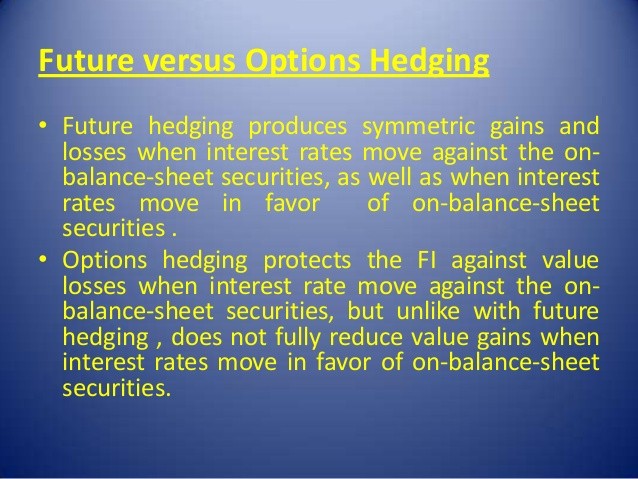Hedging with Options The Basics Financial Web
Post on: 16 Май, 2015 No Comment

One common and effective method used to limit risks in equity investments is to hedge with options, called hedging options. In some cases, options are doubly effective by limiting risk, while providing additional income at the same time. By using options effectively, investors can take advantage of current market volatility (or lack thereof) and completely protect themselves from large and unexpected price movements.
Basic Definition and Terminology
An option contract gives an investor the right to purchase or sell a specific companys stock at a set price on a pre-determined date, regardless of what actual company shares are selling for at the time the option becomes due. This due date is called the expiration date and the set price on the option contract is called the strike price. One option contract equals 100 shares of stock.
The option market consists of call options and put options. A purchaser of a call option purchases the right to buy shares of a companys stock at the price stated on the contract. The purchaser of a call option wants the underlying stock price to increase beyond the strike price of the option contract by the expiration date so that he/she can buy the underlying stock at the strike price and sell it on the open market at the higher market price. Remember, the purchaser of a call option purchases the right to buy shares of an underlying stock at the strike price listed on the contract, and pays a premium for this right. If at option expiration the strike price is greater than the current market price of the stock, the call option expires worthless and the purchaser loses the premium paid for the option.
In contrast to call options, put option buyers purchase the right to sell a stock at the strike price listed on the option contract by the option expiration date. The buyer of a put option wants the underlying stock to fall below the strike by the expiration date because this will allow the investor to purchase the lower-priced shares on the open market and then sell these shares at the higher put option strike price. Remember, buying a put option gives the owner the right to sell shares at the strike price of the contract. If at option expiration the strike price is less than the market price of the underlying security, the option is worthless because buying at the higher market price and then selling at the lower strike price would result in a loss. In this case, the buyer loses the premium paid for the option.
An investor can also sell options. The seller of any option hopes for a worthless expiration value so that the seller will realize a profit amounting to the premium paid to them by the purchaser of the contract. There are many option hedging strategies that can reduce market risk, and involve both the buying and selling of options.














